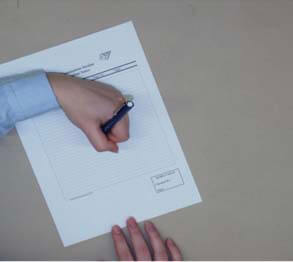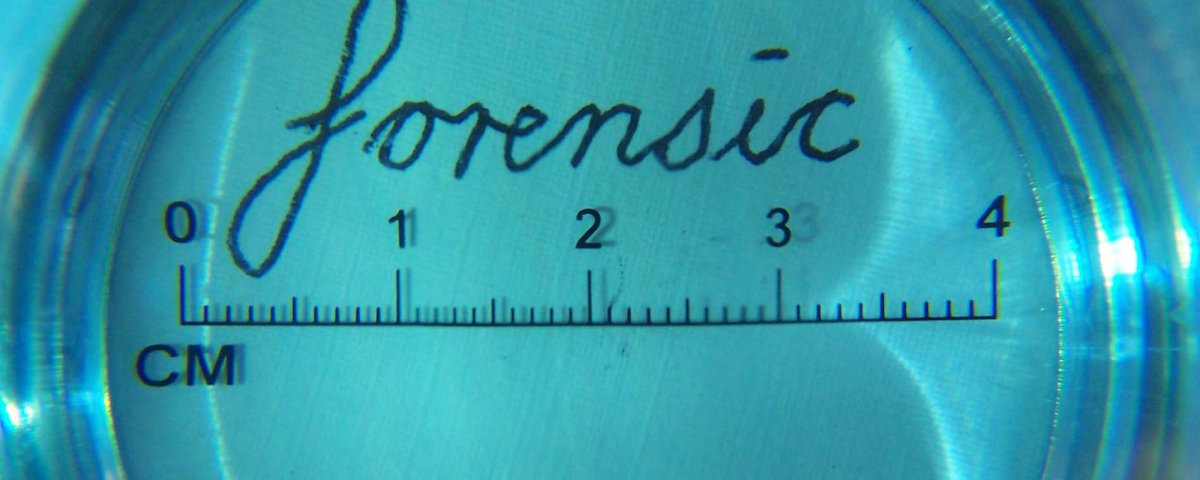Left-handed Writing in Forensic Handwriting Analysis
Left handed people make up about 10% of the population. For hundreds of years scientists have been interested in what makes this proportion of the population write with their left hand. Some ancient civilizations actually thought that left handedness was a sign of the devil. In fact, a lot of scientific research has explored that theme and attempted to find a link between left handedness and aberrant behavior, completely without success. In fact, looking at the list of famous left handers it is obvious there is more likely to be a link to enhanced intellect than anything else: Bill Gates, Leonardo da Vinci, Marie Curie, Ned Flanders, etc. OK, maybe Ned is not a great example.
What has this to do with handwriting comparisons?
The forensic comparison of handwriting is generally lacking in statistical validation of those letter design features that are common or rare in handwriting. That is, handwriting comparison experts make hundreds of assessments as to what constitutes rare or common ways in which each letter or numeral may be written based on their experience but there is little testing to measure the accuracy of these separate assessments.
It’s not all bad news. Over the last few decades there have been numerous validation tests to establish that the final conclusions that experts draw based on their assessments have relatively low error rates in correctly identifying whether a writer has written a questioned document.
There are two problems in testing the expert assessments of different letter designs. One is that a very large number of assessments by different experts is required in order for the results to be reliable and these results need to be checked against a very reliable set of proven data concerning what is a rare or common handwriting feature. The second problem is that any data showing what is rare or common needs to be current and this is a problem when handwriting is affected by the changing nature of what is taught as handwriting and the varying effects of migration and aging on any given population.
There is one area, however, where both of these two variables seem to have a far reduced effect. Previous 1985 UK research by a set of researchers (Franks et al) shows that there is a strong difference between the directions of pen strokes of left-handed people compared to right-handed people irrespective of age or education. Left-handed writers are far more likely to make cross-strokes from right to left than left to right and similarly, left-handed writer write circular letters and numbers with clock-wise strokes, rather than counter clock-wise.
For example, of the cross strokes of A, J, T and cursive t, it was found that:
between 58% to 76% of left-handed people wrote left to right depending on the formation. This was a far higher proportion than that found in right-handed people.
Unfortunately, this UK study did not publish any material on the possible effect of arm and hand position on this data. That is, it is well known that left-handers employ a variety of arm and hand positions to hold the pen. Some hold the pen with a “hooked hand” so that the pen faces the writer. It has been speculated that differences between right and left-handers could be more due to something like this peculiar hand position employed by an unknown percentage of the left-handed population rather than the left-handed population as a whole.
Example of hook handed “leftie”

In 2004 I tested 300 left-handed people and attempted to untangle whether the way in which left-handed people held their pens affected the stroke direction of their handwriting. I also wanted to see if my results would replicate the overall data of the Franks research despite using an Australian population.
Not all of the results were clear but one result was pronounced.
The results of the experiment showed that Australian left-handed writers were very similar to those mentioned in the UK study in terms of the proportion who used different stroke directions to right handers. Secondly, the hooked hand position as a variable did not significantly increase the frequency of those left-handed strokes that help distinguish between right and left-handers.
Identifying left-handed handwriting by looking at stroke direction is a vital tool when looking for forgery of signatures or authorship of disputed handwriting. The proportion of left-handed writers is relatively small so sometimes evidence of left handed writing can help immensely in either implicating or exculpating a suspect.
Cliff Hobden.



